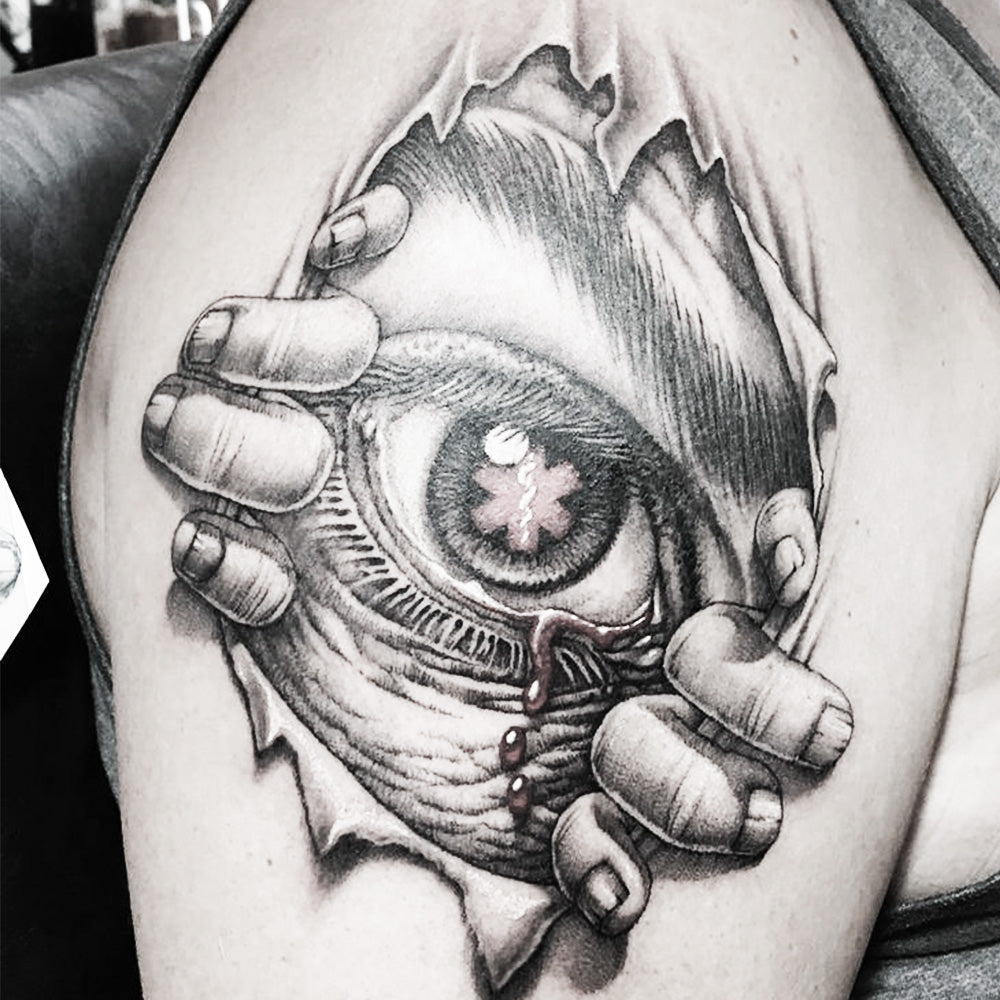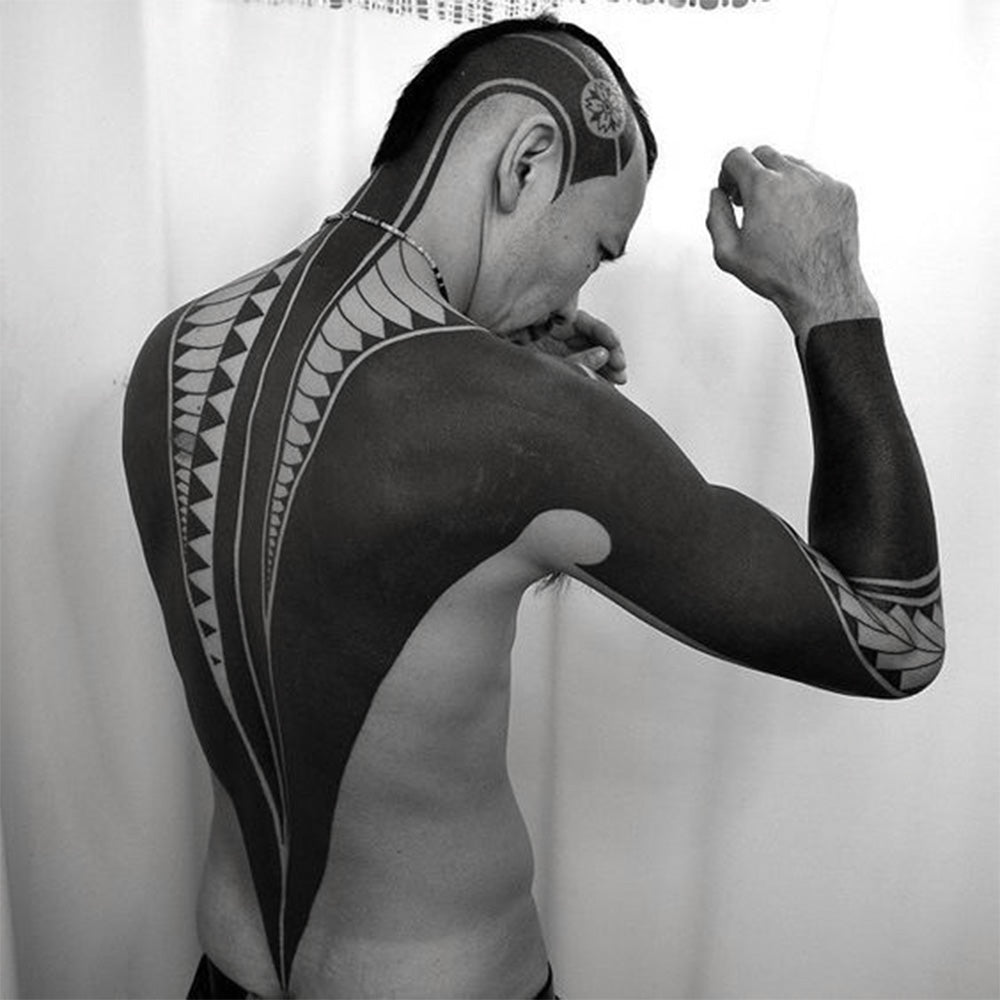Single Needle Tattoos: A Fellow Artist's Guide to Precision Work
Why Single Needle Work Matters for Your Career
We've all been there - a client walks in with a Pinterest board full of delicate, fine line tattoos, expecting you to recreate that gallery-quality work. Single needle tattooing has exploded in popularity, and honestly, it's become essential for staying competitive. But here's what nobody tells you: this technique will humble even experienced artists.
Single needle work uses just one 1RL needle to create the finest lines possible. Every stroke shows, every slight hand tremor becomes visible, and there's zero room for the small mistakes we might get away with in traditional work. It's both incredibly rewarding and genuinely challenging.
The Real Difference: Single Needle vs Fine Line
Here's the honest breakdown from someone who's spent years perfecting both:
Single Needle (1RL):
· One needle, ultimate precision
· Requires the steadiest hands
· Takes forever but looks incredible
· Clients pay premium prices
· Most unforgiving technique you'll ever learn
Fine Line (3RL-5RL):
· Small needle groupings
· More forgiving for learning
· Faster application
· Still detailed, less stress
· Great stepping stone to single needle
Most artists I know started with 3RL fine line work before attempting true single needle. There's no shame in building up to it - this technique demands respect.
What Actually Makes Single Needle Work Challenging
The Tattoo Equipment Reality
Your regular setup probably won't cut it for single needle work. I learned this the hard way after ruining several pieces with wobbly needles and inconsistent ink flow. Quality matters more here than anywhere else in tattooing.
Machine Settings That Work:
· Low voltage (4-5.5V max)
· Consistent, smooth operation
· No vibration or instability
· Rotary machines generally work better
The Needle Quality Problem:
Cheap needles will sabotage your work. I've seen talented artists struggle because their needles wobbled or delivered inconsistent ink flow. When you're working with lines this fine, equipment flaws become glaringly obvious.
Technique Adjustments You'll Need to Make
Hand Control:
Forget everything about wrist-based movements. Single needle work demands arm-based control for consistency. It took me months to retrain my muscle memory.
Ink Flow Management:
Single needles restrict ink flow significantly. You'll reload constantly - every 2-3cm of line work. Keep your ink fresh because blood mixing affects consistency fast.
Skin Technique:
Stretch becomes critical. Single needles don't have the "give" of larger groupings, making blowouts more likely if your stretching isn't perfect.

The Learning Curve: What to Expect
Month 1-2: Frustration Phase
Everything feels wrong. Your lines wobble, ink flow sucks, and you'll question why you started this journey. Practice on synthetic skin relentlessly. Don't touch real skin until you can draw consistent lines for 30 minutes straight.
Month 3-6: Breakthrough Phase
Suddenly it clicks. Your hand steadies, you understand ink flow, and client work becomes possible. Start with simple designs - single line flowers, minimalist scripts, basic geometric patterns.
Month 6+: Confidence Phase
You're booking single needle sessions confidently. Clients love your work, you're charging premium rates, and other artists ask for advice. The investment in learning pays off.
Common Problems and Real Solutions
Wobbly Lines:
Usually equipment, not skill. Invest in quality needles designed for precision work. Lower your voltage. Check your machine maintenance.
Inconsistent Ink Flow:
Clean needles frequently during sessions. Use quality inks with proper consistency. Replace ink caps when blood mixing occurs.
Client Expectations:
Be honest about healing. Single needle work fades faster than traditional tattoos. Set realistic expectations and offer touch-up policies.
Pricing Struggles:
Don't undercharge. Single needle work takes longer and requires specialized skills. Price accordingly or you'll burn out.
Why Equipment Investment Matters
I used to think expensive needles were just marketing hype. Then I tried quality cartridges designed specifically for precision work, and everything changed. The difference isn't subtle - it's night and day.
“What Quality Needles Actually Do:
· Eliminate wobbling that ruins fine lines
· Provide consistent ink flow throughout sessions
· Maintain sharpness longer
· Reduce hand fatigue from fighting equipment”
YES Needle: Why We Switched and Never Looked Back ←
After years of fighting with inconsistent needles, we discovered YES Needle cartridges engineered specifically for precision work. The difference was immediate and dramatic.
This is your heading text.
· Rock-Solid Stability: No more wobbling lines ruining pieces
· Perfect Ink Flow: Consistent delivery throughout entire sessions
· Predictable Results: Every needle performs identically
· Client Satisfaction: Better work leads to happier clients and more referrals
The Honest Truth: We were skeptical about "premium" needles until we tried them. Now we won't use anything else for single needle work. The quality difference directly translates to better tattoos and higher earnings.
Why It Matters: Single needle clients pay for perfection. When your equipment supports your skill level instead of fighting against it, you can focus entirely on creating exceptional art.

The Bottom Line
Single needle tattooing isn't just a trend - it's become essential for modern tattoo artists. Clients want this work, and they'll pay premium rates for artists who can deliver quality results.
The learning curve is real, and the equipment investment matters more than you might expect. But for artists willing to put in the work, single needle techniques open up new creative possibilities and earning potential.
Don't try to cut corners on equipment. Invest in needles engineered for precision work, practice consistently, and give yourself time to develop the skills. Your future clients (and bank account) will thank you.
Remember:
Every master artist started exactly where you are now. The difference between good and great single needle work often comes down to patience, practice, and having equipment that supports your artistic vision rather than fighting against it.




